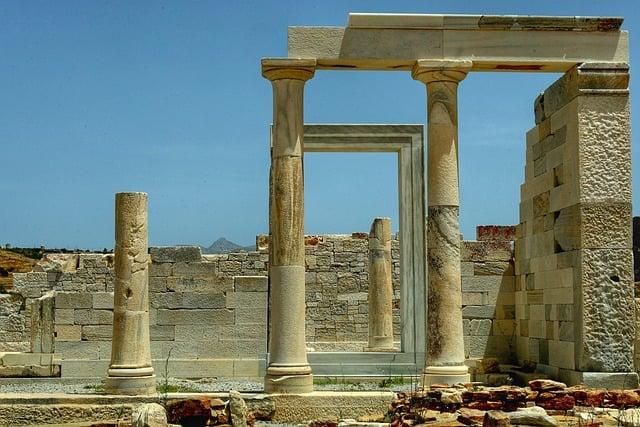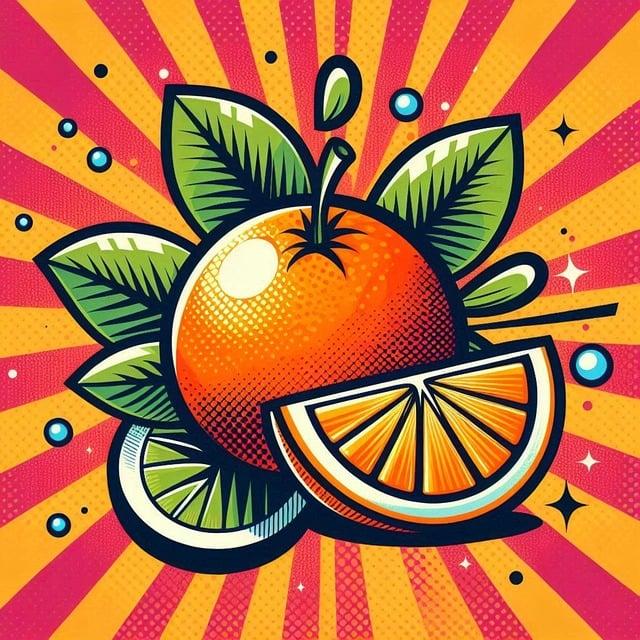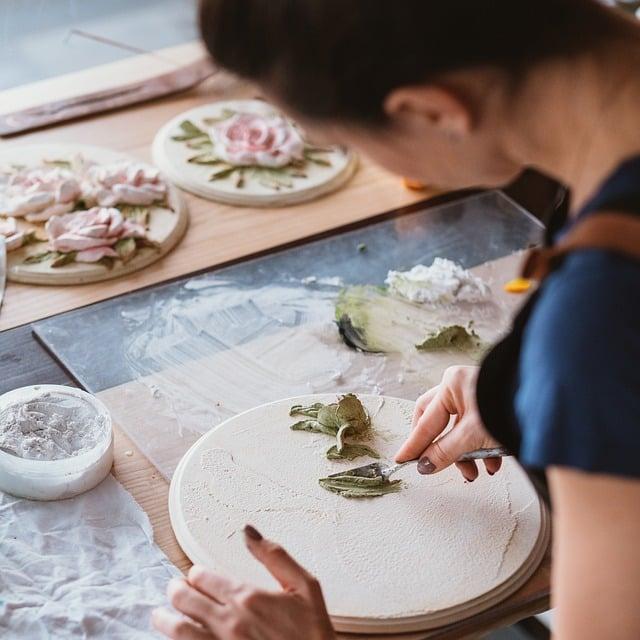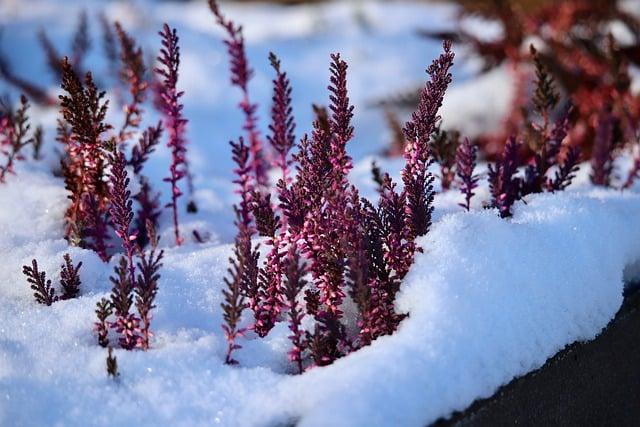In ancient times, as winter’s chill enveloped the earth, pagans crafted circular wreaths from evergreen branches. These rings symbolized eternal life, a reminder that even in the darkest days, nature endures. They adorned their homes, inviting warmth and hope. When Christianity spread, the wreath transformed, embracing new meanings of love and unity. Today, as we hang our Christmas wreaths, we unknowingly honor those ancient traditions, celebrating the cycle of life and the promise of renewal amidst the winter’s grasp.
Table of Contents
- Exploring the Ancient Roots of the Christmas Wreath
- Symbolism and Significance in Pagan Traditions
- Crafting Your Own Wreath: A Blend of Tradition and Creativity
- Modern Interpretations: Embracing Pagan Influences in Contemporary Celebrations
- Q&A

Exploring the Ancient Roots of the Christmas Wreath
The Christmas wreath, often seen adorning doors and homes during the festive season, has a rich tapestry of history that intertwines with ancient pagan traditions. Originating from the practice of using circular shapes to symbolize eternity, these wreaths were crafted from various natural materials, such as evergreen branches, which represented life and resilience in the face of winter’s harshness. The circular form, devoid of a beginning or end, was a powerful emblem of the cyclical nature of life, death, and rebirth, concepts deeply rooted in pagan beliefs. As the winter solstice approached, many cultures celebrated the return of the sun, and the wreath became a symbol of hope and renewal, a reminder that brighter days were on the horizon.
In addition to their symbolic significance, wreaths were often used in ancient rituals and celebrations. They were adorned with **holly**, **mistletoe**, and other seasonal foliage, each carrying its own meaning and associations. For instance, holly was believed to ward off evil spirits, while mistletoe was revered for its mystical properties and was often used in fertility rites. As Christianity spread, these pagan customs were gradually absorbed into the holiday traditions we recognize today. The Christmas wreath, with its blend of evergreen beauty and rich symbolism, serves as a bridge between ancient practices and modern celebrations, reminding us of the enduring nature of human beliefs and the ways in which they evolve over time.

Symbolism and Significance in Pagan Traditions
The Christmas wreath, often adorned with vibrant colors and festive decorations, carries a rich tapestry of symbolism rooted in ancient pagan traditions. At its core, the circular shape of the wreath represents **eternity** and the cyclical nature of life, echoing the belief in the endless cycle of seasons and the return of the sun. This concept was particularly significant during the winter solstice, a time when many pagan cultures celebrated the rebirth of the sun and the promise of longer days ahead. The use of evergreens, such as fir and pine, in wreath-making symbolizes **resilience** and **renewal**, as these plants remain vibrant even in the harshest winter months, embodying the hope of life persisting through adversity.
In addition to their aesthetic appeal, the elements used in wreaths often carry deeper meanings. For instance, the inclusion of **red berries** can signify **fertility** and **prosperity**, while the use of **golden accents** may represent the warmth and light of the sun, a vital force in pagan beliefs. The act of hanging a wreath on doors or walls serves as a welcoming gesture, inviting positive energy and abundance into the home. As these traditions evolved and intertwined with Christian practices, the wreath transformed into a symbol of celebration and unity, yet its pagan roots remain a testament to the enduring power of nature and the human connection to the cycles of life.
Crafting Your Own Wreath: A Blend of Tradition and Creativity
Creating your own wreath is not just an artistic endeavor; it’s a journey through history and symbolism. The circular shape of the wreath, often adorned with evergreen foliage, has roots that stretch back to ancient pagan traditions. In many cultures, the circle represents eternity, a reminder of the cyclical nature of life and the changing seasons. As you gather materials for your wreath, consider incorporating elements that resonate with these age-old beliefs. Think about using:
- Pine or fir branches to symbolize resilience and everlasting life.
- Holly berries for their vibrant color and association with protection.
- Cinnamon sticks for a touch of warmth and the sweet scent of the season.
As you weave together these natural elements, you’re not only crafting a beautiful decoration but also paying homage to the traditions that have shaped this festive symbol. The act of wreath-making can be a meditative practice, allowing you to reflect on the past while infusing your personal creativity into each piece. Consider adding unique touches that represent your own story, such as:
- Personal ornaments that hold special meaning.
- Ribbons in colors that reflect your personality or seasonal themes.
- Natural elements like dried flowers or fruits for a rustic charm.

Modern Interpretations: Embracing Pagan Influences in Contemporary Celebrations
The Christmas wreath, a beloved symbol of the holiday season, has roots that stretch back to ancient pagan traditions. Originally, these circular arrangements of greenery were crafted to celebrate the winter solstice, a time when communities gathered to honor the return of the sun. The circular shape of the wreath, representing eternity and the cyclical nature of life, was adorned with various natural elements that held significance in pagan rituals. **Evergreen branches**, for instance, symbolized resilience and the promise of renewal, while **berries** and **pinecones** were often included to represent fertility and abundance. This connection to nature and the changing seasons reflects a deep reverence for the earth that is often overlooked in modern celebrations.
As contemporary society embraces a more inclusive approach to holiday traditions, the Christmas wreath has evolved into a fusion of old and new. Many people now incorporate **pagan-inspired elements** into their wreaths, such as **dried herbs** for protection and **cinnamon sticks** for warmth and comfort. This blending of influences not only honors the past but also enriches the present, allowing individuals to create personalized decorations that resonate with their values and beliefs. By embracing these ancient customs, we can foster a deeper connection to the cycles of nature and the shared human experience, transforming our holiday celebrations into a tapestry of history and meaning.
Q&A
-
What is the historical significance of the Christmas wreath?
The Christmas wreath has its roots in ancient pagan traditions, particularly among the Celts and Romans. It symbolized the cycle of life and the changing seasons, often made from evergreen plants to represent eternal life and resilience during winter.
-
How did the Christmas wreath transition from paganism to Christianity?
As Christianity spread, many pagan customs were adapted into Christian practices. The circular shape of the wreath came to symbolize God’s eternal love, while the evergreens represented the promise of everlasting life through Christ.
-
What materials are traditionally used in making Christmas wreaths?
Traditional Christmas wreaths are often made from:
- Evergreen branches - symbolizing life and renewal
- Berries – representing the blood of Christ
- Pinecones – symbolizing new life
- Ribbons – often red or gold, adding festive color
-
Are there specific meanings associated with the colors used in Christmas wreaths?
Yes, the colors in Christmas wreaths often carry symbolic meanings:
- Green - represents hope and renewal
- Red – symbolizes the love and sacrifice of Christ
- Gold – signifies royalty and divinity
As we hang our Christmas wreaths, let us remember their ancient roots, intertwining nature and tradition. This festive symbol, once a pagan emblem of life and renewal, now bridges cultures, reminding us of the enduring spirit of celebration.

大家好,我是彼得潘,專業的手法身體治療師。我喜歡探索和研究各種主題,並透過與人工智慧的合作分享專業、實用、有趣的文章。我們定期進行人工審核,以確保內容的準確性。如果您發現文章中有任何不準確的地方,請隨時與我們聯繫,我們會及時糾正。您可以透過 [email protected] 與我們聯繫。



